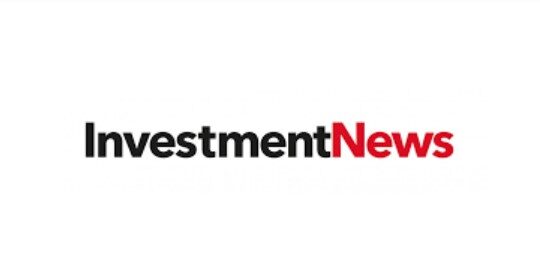
Revitalizing Qualified Opportunity Zones: An Overview of the One Big Beautiful Act Proposal
Executive Summary
The One Big Beautiful Buildings Act (OBBBA) has enacted a comprehensive overhaul of the federal Qualified Opportunity Zone (QOZ) incentive program – “QOZ 2.0”, while not extended the QOZ 1.0 Program.
Anchored by the Senate version of the OBBBA, the legislation renews the government’s commitment to channeling long-term capital into economically distressed communities. The legislation includes significant structural reforms designed to ensure geographic equity, promote renewed rural development, strengthen compliance, and refine investor incentives, while transitioning the program from a sunset-driven mechanism into a permanent component of the Internal Revenue Code (“IRC”).
Background: The Evolution of Opportunity Zones
Enacted under the 2017 Tax Cuts and Jobs Act, the original Opportunity Zone program (“QOZ 1.0”) offered taxpayers the ability to defer, reduce, or eliminate capital gains tax liabilities by reinvesting those gains into designated Qualified Opportunity Funds (“QOFs”) located in low-income census tracts. While the incentive succeeded in catalyzing investment activity, it also faced criticism for a lack of transparency, overly generous tract designations in certain situations, and underperformance in the most distressed communities.
The QOZ 2.0 under the OBBBA aims to address these shortcomings and extend the benefits of the program indefinitely into the next generation of community and economic development policy.
Notably, it introduces a second round of Opportunity Zone designations for the 2027–2033 period, improves eligibility criteria, enhances tax incentives, and imposes robust reporting requirements.
Key Reforms to QOZ 2.0 Under the OBBBA
Permanent and Renewable Program Design
- The proposal makes the QOZ program a permanent fixture of the IRC, moving away from its previous time-limited framework.
- Redesignation of QOZs will occur on a decennial basis, beginning July 1, 2026, with new zones taking effect on January 1, 2027. This shift ensures that designated tracts reflect current economic realities, rather than outdated 2010 census data.
Stricter Census Tract Eligibility Requirements
- The OBBBA proposal tightens the eligibility thresholds for QOZ designation:
- Census tracts must have median family income below 70% (down from 80%) of the state or metro area average.
- A poverty rate of at least 20%, in combination with income below 125% of the area median, is also required.
- The “contiguous tract rule” which previously allowed adjacent higher-income tracts to qualify, is being repealed.
- Puerto Rico’s special status allowing broader designations is removed.
Enhanced Incentives for Rural Development
- The QOZ 2.0 introduces Qualified Rural Opportunity Funds (QROFs) – vehicles designed to direct investment specifically into underserved rural areas.
- QROFs will benefit from a 30% basis step-up for investments held for five years, compared to the 10% available to standard QOFs.
- The substantial improvement test for property is reduced from 100% to 50% in rural zones.
- Rural QOFs must invest 90% of assets in rural-designated tracts.
Updated Tax Incentives and Deferral Mechanics
Deferral of Capital Gains
- Capital gains invested in a QOF after January 1, 2027, are eligible for deferral until the earlier of disposition or the fifth anniversary of the investment date.
- This deferral for new investments will be on a rolling basis.
- Any investments in QOZs made before December 31, 2026 will be subject to the old QOZ 1.0 rules and not those under the OBBBA.
Step-Up in Basis
- Investors receive a gradual basis increase over six years, totaling 10%:
- 1% per year for the first three years, 2% for the next two years, and 3% in the sixth year.
- For rural investments, the enhanced step-up can reach 30% under similar proportional phasing.
- Gains on QOF investments held for at least 10 years are excluded from taxation upon sale.
- Under a new approach, for investments held 30 years or longer, the basis is stepped up to fair market value, eliminating tax on appreciation up to that point.
Structural and Compliance Improvements
Strengthened Reporting and Oversight
- Under QOZ 2.0, new mandatory electronic reporting is imposed on QOFs and QOZ businesses (QOZBs), including disclosures on:
- Asset locations
- Economic sectors
- Employment and housing impacts
- Penalties for non-compliance may reach up to $50,000, with higher fines for willful violations.
- The IRS is allocated $15 million to implement and enforce these provisions.
Clarifications and Limitations
- Interim gains (from property sold before the 10-year mark) are not automatically deferred unless reinvested into a new QOF.
- The bill does not include a “fund of funds” mechanism or special rules for reinvestment of gains during the holding period.
- QOZ 2.0 of the Senate version excludes certain proposals from the House version, including:
- Allowing modest after-tax ordinary income investments (capped at $10,000)
- Special provisions for affordable housing or workforce housing development
- Expanded eligibility for operating businesses
Strategic Implications for Investors
Investors considering participation in the next phase of the QOZ program should take note of the following:
- Timing. Investments made after the current program’s expiration on December 31, 2026 will benefit from new designation rules and potentially better-structured incentives, but investors must ensure liquidity to meet 2026 tax obligations from investments under QOZ 1.0.
- Geographic Shifting. New designations will emphasize more distressed and rural communities, intentionally changing where capital will flow.
- Longer Horizons. The new incentive structure favors investors with longer-term commitments, particularly those targeting 10- to 30-year holds.
- Due Diligence & Compliance. Enhanced complexity, combined with new reporting rules, means investors must carefully vet and select QOF managers and tax advisors.
Conclusion
The proposed QOZ 2.0 reforms under the OBBBA represent a thoughtful recalibration of the QOZ 1.0 statutory framework. By sharpening eligibility criteria, prioritizing economically distressed and rural communities, enhancing tax benefits for long-term investments, and imposing rigorous reporting/oversight, the legislation aims to strike a balance between investor incentive and community impact.
While many technical details remain to be finalized, the legislative trajectory points toward a more targeted, transparent, and sustainable Opportunity Zone framework in the years ahead.
Memorandum Disclaimers & Disclosures
This Memorandum is confidential and may contain legally privileged and proprietary information of Twin Focus Capital Partners LLC (“TwinFocus”). It is intended solely for the use of the Recipients to which it is addressed. If you are not the intended recipient, you are hereby notified that any dissemination, copy, disclosure, use or action taken based on this Memorandum or any information herein is strictly prohibited and may be unlawful. If you received this Memorandum in error, please contact the sender immediately and destroy the material in its entirety, whether electronic or hard copy.
This Memorandum may not be otherwise redistributed, retransmitted or disclosed, in whole or in part, or in any form or manner, without the express written consent of TwinFocus.
Investments involve numerous risks, including, among others, market risk, counterparty default risk and liquidity risk. In some cases, securities, strategies and other financial instruments may be difficult to value or sell and reliable information about the value or risks related to the security, strategy or financial instrument may be difficult to obtain. Income from such securities, strategies and other financial instruments, if any, may fluctuate and that price or value of such securities, strategies and instruments may rise or fall and, in some cases, investors may lose their entire principal investment. Foreign currency rates of exchange may adversely affect the value, price or income of any security or financial instrument mentioned in this Memorandum. Investors in such securities and instruments effectively assume currency risk.
Hedge fund and other alternative investments are generally unregulated and considered inherently very risky and you can lose material portions of your principal in very short periods of time. Prior to making any investments in any hedge fund managers and alternative investment strategies, you should review all subscription documents and confidential offering memoranda provided by the managers/strategies, paying particular attention to the risk disclosures. You should not invest in such managers/strategies if you are not thoroughly comfortable with these risk disclosures or do not understand and/or appreciate the increased levels of risks associated with such strategies. Additionally, this Memorandum may provide information regarding private funds/strategies/investments which are exempt from registration under the Investment Company Act of 1940 pursuant to Section 3(c)(1) and/or 3(c)(7) which were offered as private placements in reliance on Regulation D of the Securities Act of 1933. Each individual fund/strategy and NOT TwinFocus shall have the sole responsibility for (i) formally qualifying prospective investors to ensure they meet the suitability criteria to invest in each relevant fund/strategy and, once qualified, (ii) sending the formal offering documents and other materials to each prospective investor.
Any information relating to the tax status of financial instruments and/or strategies discussed herein is not intended to provide tax advice or to be used by anyone to provide tax advice. Recipients are urged to seek tax advice based on their particular circumstances from an independent tax professional.
Any waiver by Twin Focus of any section of this Memorandum Disclaimer Statement should not be construed as a general waiver of any other section and/or the entire Memorandum Disclaimer Statement.
The information, including but not limited to forecasts and estimates, in this Memorandum was obtained from various sources and TwinFocus does not guarantee its accuracy. Although the information contained in this Memorandum is from sources believed to be reliable, no representation or warranty, expressed or otherwise, is made to, and no reliance should be placed on its fairness, accuracy, completeness or timeliness.
This Memorandum may contain multi-year financial pro forma planning projections, predictions, return assumptions, as well as other financial, legislative, statutory and client balance sheet assumptions that are for illustrative purposes only and no representations or warranties, expressed or otherwise, are made to, and no reliance should be placed on their fairness, accuracy, completeness, or timeliness.
Past performance is not indicative of future results and there can be no assurance that the future performance of any specific investment, investment strategy, or product will be profitable, equal any corresponding historical performance level(s), be suitable for client portfolios or individual situations, or prove successful. Due to various factors, including changing market conditions and/or applicable laws, the content may no longer be reflective of current opinions or positions. As such, all opinions, projections and estimates are as of the date of the Memorandum and are subject to change without notice. TwinFocus is under no obligation to update this Memorandum and Recipients should therefore assume that TwinFocus will not update any fact, circumstance or opinion contained in this Memorandum unless specifically requested. TwinFocus and any director, officer or employee of TwinFocus do not accept any liability whatsoever for any direct, indirect or consequential damages or losses arising from any use of this Memorandum or its contents.
This Memorandum may contain current opinions of third-party authors and not necessarily those of TwinFocus. Such opinions are subject to change without notice.
This Memorandum may contain references to market indices. Such information is presented to show the general trends in certain markets for the periods indicated and is not intended to imply that the strategy(s) discussed and/or reviewed are similar to the indices either in composition or element of risk. TwinFocus does not make any representations as to whether the indices may or may not be unmanaged, not investable, have any expenses and may or may not reflect reinvestment of dividends and distributions. Index data is provided for comparative purposes only. A variety of factors may cause an index to be an inaccurate benchmark for a particular portfolio/manager/strategy and the index does not necessarily reflect the actual investment strategy of the portfolio/manager/strategy discussed and/or presented in the Memorandum. Current period returns may be estimates. Actual index returns and/or estimates are calculated and presented to Twin Focus through third party software providers and as such, may differ from the final figures produced by the index provider.



